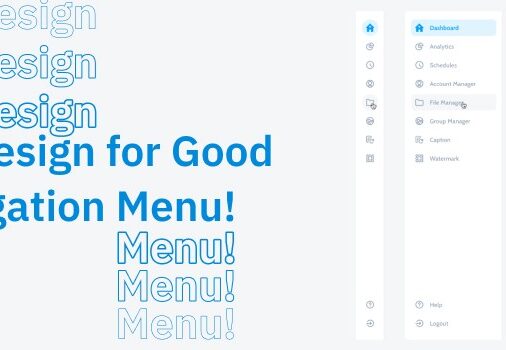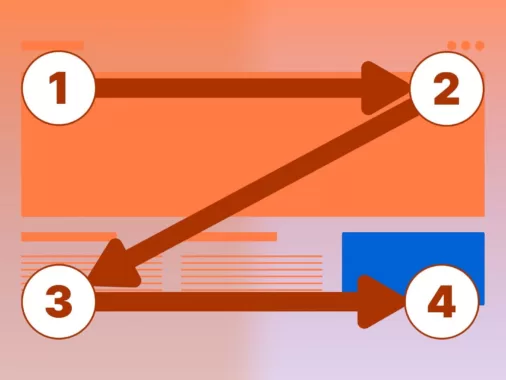<!–
if(!gform){document.addEventListener(“gform_main_scripts_loaded”,function(){gform.scriptsLoaded=!0}),window.addEventListener(“DOMContentLoaded”,function(){gform.domLoaded=!0});var gform={domLoaded:!1,scriptsLoaded:!1,initializeOnLoaded:function(o){gform.domLoaded&&gform.scriptsLoaded?o():!gform.domLoaded&&gform.scriptsLoaded?window.addEventListener(“DOMContentLoaded”,o):document.addEventListener(“gform_main_scripts_loaded”,o)},hooks:{action:{},filter:{}},addAction:function(o,n,r,t){gform.addHook(“action”,o,n,r,t)},addFilter:function(o,n,r,t){gform.addHook(“filter”,o,n,r,t)},doAction:function(o){gform.doHook(“action”,o,arguments)},applyFilters:function(o){return gform.doHook(“filter”,o,arguments)},removeAction:function(o,n){gform.removeHook(“action”,o,n)},removeFilter:function(o,n,r){gform.removeHook(“filter”,o,n,r)},addHook:function(o,n,r,t,i){null==gform.hooks[o][n]&&(gform.hooks[o][n]=[]);var e=gform.hooks[o][n];null==i&&(i=n+”_”+e.length),null==t&&(t=10),gform.hooks[o][n].push({tag:i,callable:r,priority:t})},doHook:function(o,n,r){if(r=Array.prototype.slice.call(r,1),null!=gform.hooks[o][n]){var t,i=gform.hooks[o][n];i.sort(function(o,n){return o.priority-n.priority});for(var e=0;e<i.length;e++)"function"!=typeof(t=i[e].callable)&&(t=window[t]),"action"==o?t.apply(null,r):r[0]=t.apply(null,r)}if("filter"==o)return r[0]},removeHook:function(o,n,r,t){if(null!=gform.hooks[o][n])for(var i=gform.hooks[o][n],e=i.length-1;0<=e;e–)null!=t&&t!=i[e].tag||null!=r&&r!=i[e].priority||i.splice(e,1)}}}
Journey Mapping in the New Normal: Part 3 | UX Booth
(function(){var bsa = document.createElement(‘script’);bsa.type = ‘text/javascript’;bsa.async = true;bsa.src = ‘//cdn.buysellads.com/ac/pro.js’;document.getElementsByTagName(‘head’)[0].appendChild(bsa);})();
(function(i,s,o,g,r,a,m){i[‘GoogleAnalyticsObject’]=r;i[r]=i[r]||function(){
(i[r].q=i[r].q||[]).push(arguments)},i[r].l=1*new Date();a=s.createElement(o),
m=s.getElementsByTagName(o)[0];a.async=1;a.src=g;m.parentNode.insertBefore(a,m)
})(window,document,’script’,’//www.google-analytics.com/analytics.js’,’ga’);
ga(‘create’, ‘UA-6485035-1’, ‘auto’);
ga(‘send’, ‘pageview’);
/* */
Journey Mapping in the New Normal: Part 3
April 6th, 2021
Written by
Diana Glozman
User Experience Designer
Published on
April 6th, 2021
<!–
–>
(function() {
if (typeof _bsa !== ‘undefined’ && _bsa) {
_bsa.init(‘custom’, ‘CK7DP53L’, ‘placement:uxboothcom-728×90’,
{
target: ‘#mps-728×90’,
template: ` `
`
}
);
}
})();
#mps-728×90 #_custom_ {
background-color: #4f2d82;
}
#mps-728×90 img {
display: block;
margin: 0 auto;
line-height: 1;
overflow: hidden;
}
This is the third and final article in the series on journey mapping during the “new normal”. I covered the present-day challenges driving digital transformation as well as a tactical guide for creating service blueprints in a remote setting. This final article in the series will focus on the application of the journey map findings and journey map maintenance.
Once the deliverable is created, you don’t want the document to go dormant and forgotten. There are actionable steps that can be taken to get the most value out of the deliverable. This can be done by:
- Onboard stakeholders and spreading awareness
- Address pain points and opportunities
- Creating a future state
- Establish governance and maintenance strategy
- Instill ongoing reference and application opportunities
I’ll be sharing a high-level overview of these findings along with some of my direct experiences.
Onboarding Stakeholders
While many stakeholders and subject matter experts contributed to the creation of the journey and their input will be needed for journey validation and future state. Their team members will also need to be looped in during this phase for additional journey map visibility, feedback, and iteration. Having the entire organization exposed to the document and aligned with the process can help drive the future journey.
One tactic for this could be to hold a meeting for the high-level executives and project owners. Present the journeys and provide an easy way for them to access and comment on the documents. Then, schedule follow-up meetings with departments and teams and provide them with the journey that applies to their workflow with the ability to comment and provide input. This will help onboard the majority of the company and uncover additional areas that need clarification and iteration.

Making Changes
Work on addressing the pain points and opportunities recorded in the journey. Discuss follow-up on working towards a solution with SMEs from each area. Identify processes and technology to assess how each solution would impact the entire workflow. Continue to work with stakeholders to validate the solutions and align on implementation strategies. You may be tasked with mapping out how these solutions will impact the journey as a whole.

Establishing a Future Phase
Once the solutions for pain points are in place, it’s time to look at how to optimize the journey as a whole and what the ultimate experience should be built towards. This phase will often involve the executive team’s input. They will work closely with other department stakeholders and SMEs to brainstorm a future vision for the company.
Several metrics can be captured during the future phase’s creation that will help keep the company aligned and on track as it grows. While numerous metrics can be used, these are a few that I have come across:
- Moments of Truth (MoT) – or touchpoints between customer and company greatly impact the entire customer experience. These should be identified in the current workflow and tagged in the future state.
- North Star – these metrics are the points in the journey that can be used as a reference guide to obtaining the optimal future phase.
- Key Performace Index (KPI) is a strategic metric that can be assigned to a portion of the journey and tracked over time to gauge overall success in an area. Consider the type of areas that would be helpful to measure and track in the journey. It’s important to be strategic with KPIs and avoid setting up arbitrary measurements that may incentivize the wrong behavior.
Updates and Governance
Journey maps and service blueprints and designed to be living documents. This involves having a system and dedicated staff for maintaining the journeys. One person will be responsible for helping maintain the high-fidelity document. While it is tempting to let each department SME maintain their own journey, it’s important to have a role that maintains standards and consistency across all the journeys of an organization. That individual with work with each journey’s SMEs and decide on the timeframe for updates. While some organizations may choose to update the journeys on an annual basis, others quarterly. Some departments will require more frequent updates or more detailed journeys to be created throughout the year.
Ongoing Usage and Next Steps
With the current state cataloged, and a future state created, it becomes easy to understand what to aim for. The journey becomes a frequent reference and a decision-making tool to ensure proper growth and scale. It becomes a great resource to keep everyone aligned on how to work towards a common vision. It also is a great tool for onboarding and training new employees. A format that makes it easy to share the journeys between all departments will be key to usage and adoption. Tools like whimsical and Miro can be a great choice for remote organizations.

Conclusion
Journey maps and service blueprints are time-consuming and can be rather expensive to create. However, they have great potential to be a major asset for the company if properly created and implemented. I hope this article series gave you a high-level overview of how to onboard, implement, maintain, and utilize a journey map.
This concludes the three-part series on journey mapping in the new normal. If you enjoyed, found any articles helpful, or wish to provide some constructive feedback, send me an email at [email protected]. Happy journey-making!
Resources
Customer Experience Journeys
Journey Mapping Approaches: Current Vs. Future State
Journey Mapping Survey and Key Takeaways
North Star Metric
Subscribe for updates
UX Booth is trusted by over 100,000 user experience professionals. Start your subscription today for free.
_bsa.init(‘custom’, ‘CVAI6K7E’, ‘placement:uxboothcom-sidebar’, {
target: ‘#sponsor-banner’,
template: `

##tagline##
##description##
##callToAction##
Ad
`
});
#sponsor-banner {
font-family: -apple-system, BlinkMacSystemFont, “Segoe UI”, Roboto, Oxygen-Sans, Ubuntu, Cantarell, “Helvetica Neue”, sans-serif;
}
#sponsor-banner .native-banner {
position: relative;
display: flex;
flex-direction: column;
box-sizing: border-box;
padding: 30px;
max-width: 300px;
border-radius: 4px;
box-shadow: inset 0 0 2px 0 hsla(0, 0%, 0%, .15);
text-decoration: none;
line-height: 1.35;
align-items: start;
}
#sponsor-banner .native-img {
margin-bottom: 10px;
height: 40px;
}
#sponsor-banner .native-tagline {
margin-bottom: 4px;
font-weight: 600;
font-size: 18px;
}
#sponsor-banner .native-desc {
font-size: 14px;
}
#sponsor-banner .native-cta {
z-index: 10;
margin-top: 14px;
padding: 8px 10px;
border-radius: 3px;
font-weight: 600;
font-size: 14px;
}
#sponsor-banner .native-ad {
position: absolute;
top: 10px;
right: 10px;
padding: 2px 6px;
border-radius: 4px;
background-color: #fff;
text-transform: uppercase;
font-weight: 600;
font-size: 10px;
}
More in Business Strategy
_bsa.init(‘custom’, ‘CVAI6K7E’, ‘placement:uxboothcom-fixed’,
{
target: ‘#native-fixed-js’,
template: `
`
}
);
#native-fixed-js .native-fixed {
box-shadow: inset 0 1px 0 hsla(0, 0%, 0%, .075);
position: fixed;
bottom: 0;
left: 0;
right: 0;
display: flex;
justify-content: center;
align-items: center;
background-color: #111;
z-index: 100;
}
#native-fixed-js .native-fixed .native-link {
text-decoration: none;
display: flex;
justify-content: center;
align-items: center;
padding: 10px 14px;
color: #eee;
}
#native-fixed-js .native-fixed .native-sponsor {
font-size: 11px;
border-radius: 2px;
margin-right: 1em;
line-height: 1.5;
padding: 4px 10px;
font-weight: 600;
text-transform: uppercase;
}
#native-fixed-js .native-fixed .native-text {
font-size: 14px;
}
{{#errors}}- {{{.}}}
{{/errors}}
/* */
`










